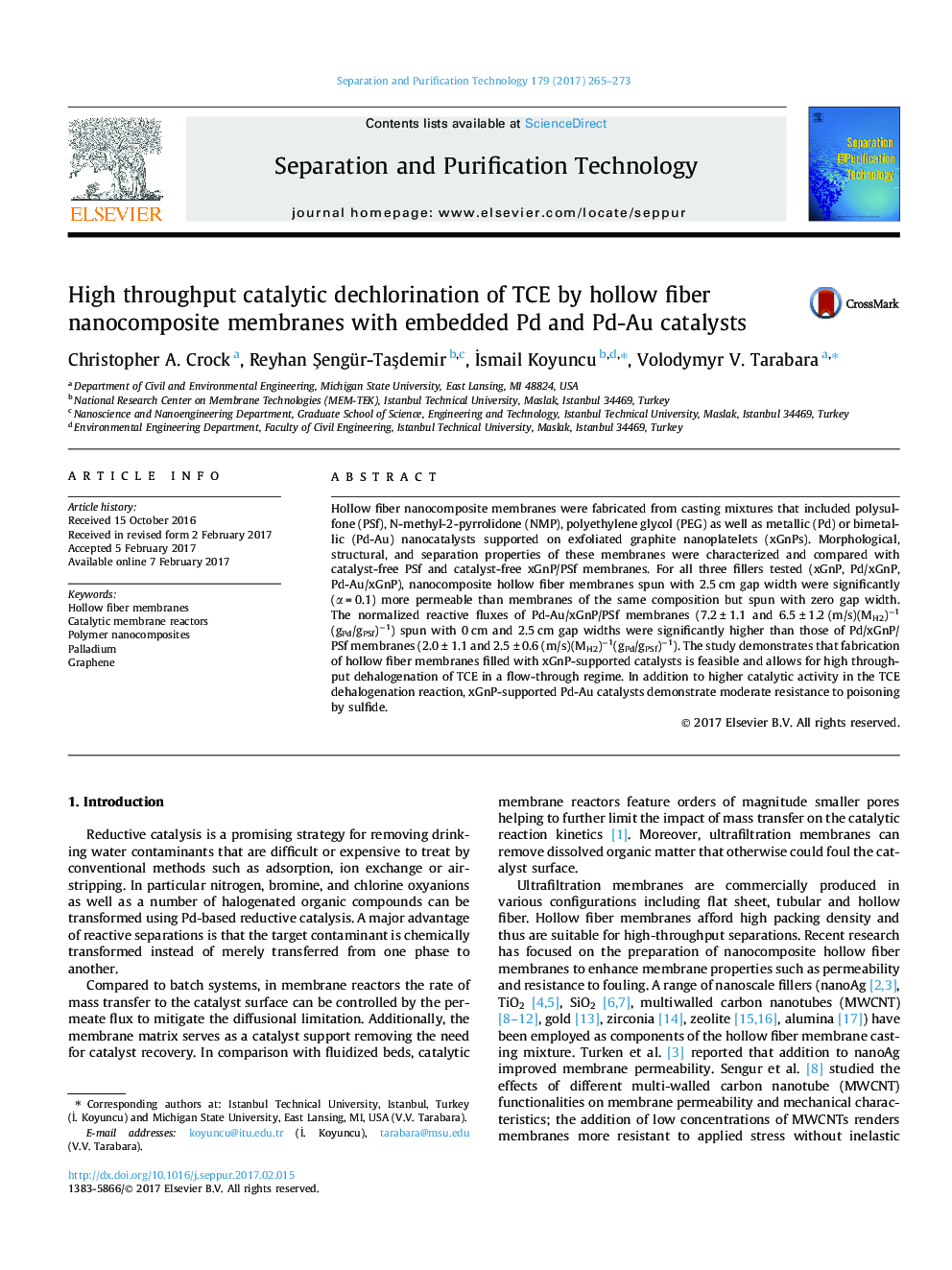| Article ID | Journal | Published Year | Pages | File Type |
|---|---|---|---|---|
| 4990080 | Separation and Purification Technology | 2017 | 9 Pages |
Abstract
Hollow fiber nanocomposite membranes were fabricated from casting mixtures that included polysulfone (PSf), N-methyl-2-pyrrolidone (NMP), polyethylene glycol (PEG) as well as metallic (Pd) or bimetallic (Pd-Au) nanocatalysts supported on exfoliated graphite nanoplatelets (xGnPs). Morphological, structural, and separation properties of these membranes were characterized and compared with catalyst-free PSf and catalyst-free xGnP/PSf membranes. For all three fillers tested (xGnP, Pd/xGnP, Pd-Au/xGnP), nanocomposite hollow fiber membranes spun with 2.5 cm gap width were significantly (α = 0.1) more permeable than membranes of the same composition but spun with zero gap width. The normalized reactive fluxes of Pd-Au/xGnP/PSf membranes (7.2 ± 1.1 and 6.5 ± 1.2 (m/s)(MH2)â1(gPd/gPSf)â1) spun with 0 cm and 2.5 cm gap widths were significantly higher than those of Pd/xGnP/PSf membranes (2.0 ± 1.1 and 2.5 ± 0.6 (m/s)(MH2)â1(gPd/gPSf)â1). The study demonstrates that fabrication of hollow fiber membranes filled with xGnP-supported catalysts is feasible and allows for high throughput dehalogenation of TCE in a flow-through regime. In addition to higher catalytic activity in the TCE dehalogenation reaction, xGnP-supported Pd-Au catalysts demonstrate moderate resistance to poisoning by sulfide.
Related Topics
Physical Sciences and Engineering
Chemical Engineering
Filtration and Separation
Authors
Christopher A. Crock, Reyhan Åengür-TaÅdemir, Ä°smail Koyuncu, Volodymyr V. Tarabara,
